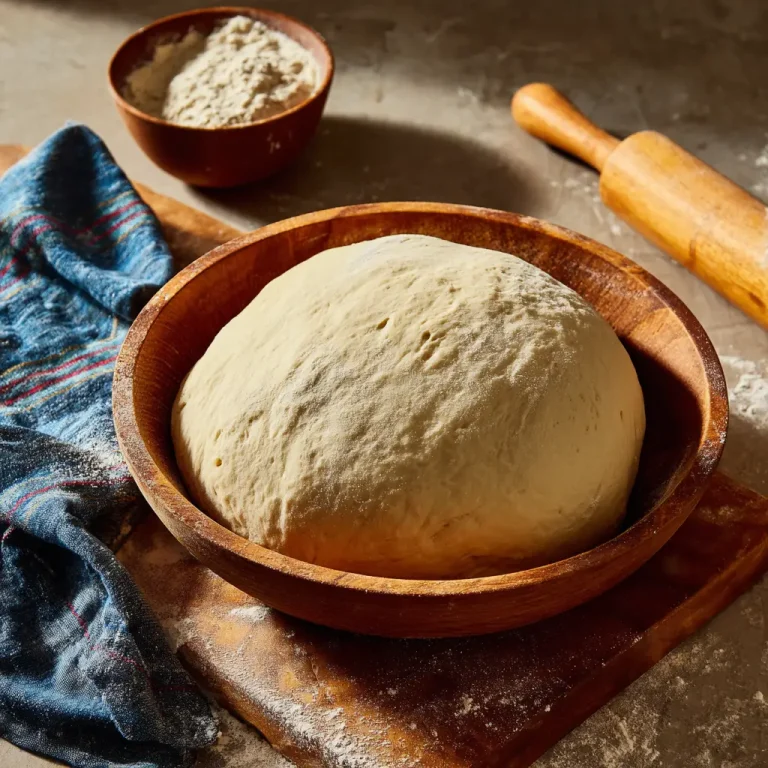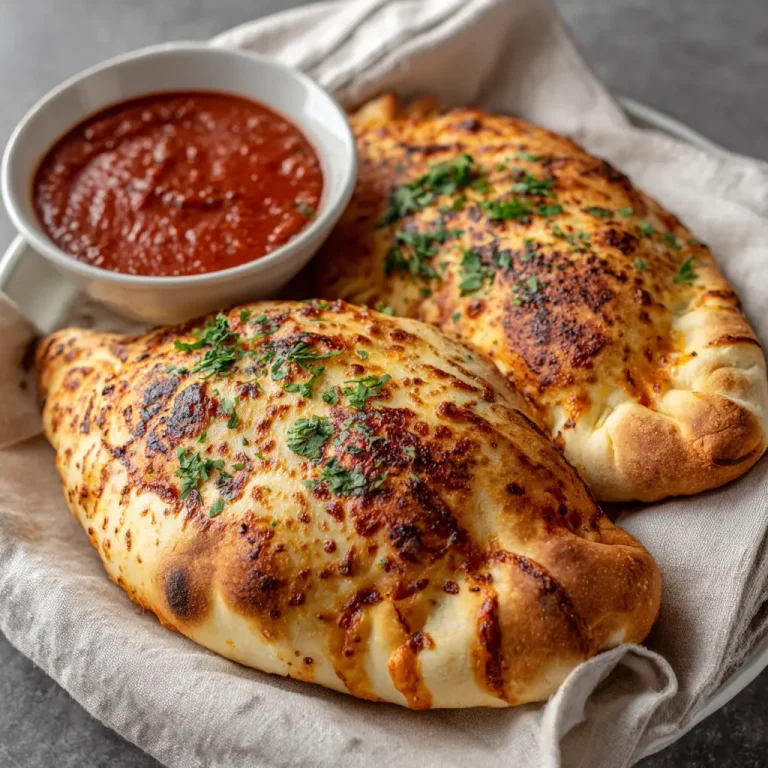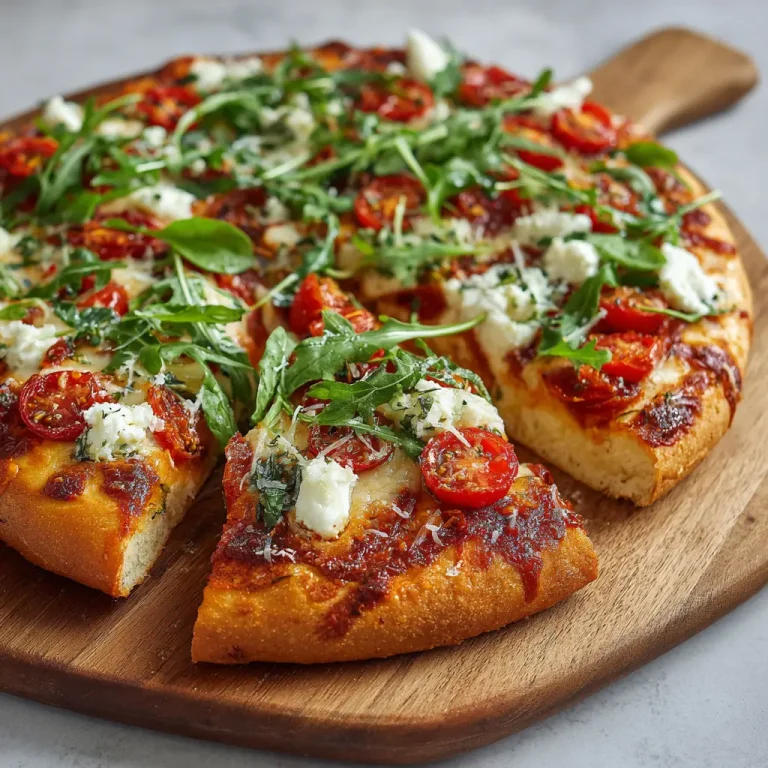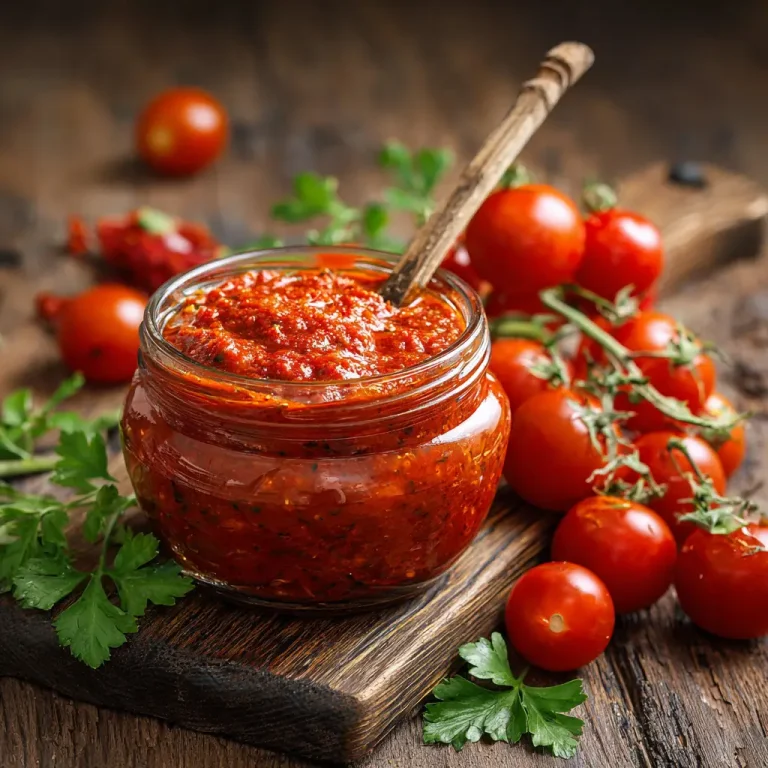Sourdough Pizza Crust Recipe | Perfectly Chewy, Crispy & Tangy Dough
Introduction
When it comes to crafting the perfect pizza, the crust often plays the starring role. With sourdough pizza crust you gain depth of flavor, a satisfying chewiness, and a hint of tang that balances rich toppings beautifully. The allure of using naturally fermented dough is not just about flavor—it also offers a lighter digestibility, better texture, and a distinctive aroma that invites eager bites. In kitchens from home ovens to artisan pizzerias, sourdough has become a hallmark of quality pizza.

The journey begins long before toppings hit the dough. Fermentation, hydration, temperature—all of these elements influence the final outcome. The aim is to produce a crust that has a crisp outer edge, an airy crumb with open holes, and a slightly sour undercurrent that pairs effortlessly with tomato sauce, melted cheeses, or creative toppings like roasted vegetables or gourmet meats. In this article you will find a clear recipe, tips for customization, nutritional insights, and serving suggestions. Let us embark on a step by step exploration to bring sourdough pizza crust to life.
Ingredients Needed
Here is a table of the ingredients required to make one medium sourdough pizza crust (about 12 inch) along with approximate calorie counts for each component:
| Ingredient | Amount | Approximate Calories |
|---|---|---|
| Bread flour | 300 g | 1080 kcal |
| Active sourdough starter (100% hydration) | 90 g | 120 kcal |
| Water (lukewarm) | 190 ml | 0 kcal |
| Olive oil | 1 Tbsp (15 ml) | 120 kcal |
| Salt | 8 g | 0 kcal* |
| Sugar or honey (optional, to boost fermentation) | 5 g | 20 kcal |
* Salt contributes negligible calories.
Total approximate calories for dough alone: 1340 kcal
Per pizza crust, this would divide into roughly 1340 kcal (for the dough base) before any toppings.
These quantities yield a dough that is elastic and workable while producing a light structure. Adjustments might be needed depending on flour absorption and humidity in your kitchen.
Step by Step Cooking Instructions
- Feed your starter ahead of time
At least 4 to 6 hours before mixing, feed your sourdough starter so it is active and bubbly. Use equal parts flour and water (by weight). The starter should show visible bubbles and a slight rise. - Mix water and starter
In a mixing bowl combine the lukewarm water and the sourdough starter. Stir gently until the starter is dispersed into the water. This ensures even hydration. - Add flour and mix
Add the bread flour into the bowl in stages, stirring as you go. Use your hand or a dough scraper. At first the mixture will look shaggy but let it rest for 20 minutes so the flour can absorb moisture (autolyse phase).Looking for something similar? Check out Veggie Pizza_. - Incorporate olive oil and salt
After the rest, add olive oil and salt (and sugar or honey if using). Knead the dough by hand or in a stand mixer with dough hook. Work for about 5 to 7 minutes until the dough becomes smooth and elastic. - Bulk fermentation
Place the dough in a lightly oiled bowl. Cover with plastic wrap or cloth. Let it rest at room temperature (ideally around 24 °C) for about 3 to 4 hours, performing gentle folds every 30 to 45 minutes. To fold: lift one side of the dough and fold over toward the center, rotate, repeat on all sides. - Cold ferment (optional but recommended)
After initial bulk rise, punch down gently and transfer to a covered container. Refrigerate for 12 to 24 hours. The cold ferment develops more flavor and stronger structure. - Shape the dough
Remove from fridge and allow it to warm for about an hour. Lightly flour your surface. Press or stretch the dough gently with your fingers, working from the center outward. Try to maintain an outer ring for crust without flattening it too aggressively. - Preheat oven and pizza stone or baking steel
Preheat your oven at its highest temperature (often 250 to 275 °C or 500 to 525 °F) for at least 45 minutes. If using a pizza stone or steel, place it in the oven so it heats thoroughly. - Transfer and top
Use a peel or flat baking sheet sprinkled with semolina or flour to slide the crust onto. Add your sauce, cheese, and toppings carefully but swiftly. - Bake the pizza
Bake for 8 to 12 minutes depending on topping load and oven heat. Rotate midway if baking position is uneven. When crust edges are golden brown and bottom shows charred spots, your pizza is ready. - Rest and slice
Let the pizza rest for a minute or two before slicing. This prevents cheese and sauce from slopping over and helps set the structure.

Tips for Customizing the Recipe
- Hydration level tweaks
If you prefer a more open, airy crumb, try increasing hydration from 63 % to 68 % (i.e. more water). This makes dough wetter and a bit harder to handle, but yields better internal structure. - Flour blends
You can experiment with mixing bread flour with whole wheat, spelt, or semolina. Substitute 20 to 30 % of the flour with wholegrain varieties to introduce nuttiness and fiber. - Flavor boosters
Add herbs like dried oregano, garlic powder, or even a pinch of roasted garlic into the dough during mixing. They infuse flavor without altering technique. - Spices and grains
Seeds such as chia, flax, or sesame can be incorporated (about 5 to 10 % of flour weight). They add texture and nutrition. - Cold proof duration
Extend cold fermentation up to 48 hours, but be careful not to overproof (which weakens structure). Taste the dough—if it’s too sour, reduce cold time next bake. - Par baking
If you like ultra‑crisp crust, partially bake the plain crust (without toppings) for 4 to 5 minutes before adding sauce and toppings. Finish baking after topping. - Using a grill or wood fired oven
When grilling, use a pizza steel or invert a heavy tray. For wood fire, rotate often near flame, monitor closely for charring without burning.

Nutritional Information
Below is an estimate of the nutrition value of the sourdough crust dough (without toppings), based on total dough calories and standard macronutrient breakdowns:
| Metric | Approximate Value |
|---|---|
| Total Calories | 1340 kcal |
| Serving Size | One full crust (makes one medium pizza) |
| Carbohydrates | ~260 g |
| Protein | ~45 g |
| Fat | ~15 g |
| Fiber | ~6 to 7 g |
| Sodium | ~1 800 mg (from salt and starter) |
If you divide the pizza into four slices, each slice from the plain crust yields about 335 kcal, excluding sauce, cheese, and toppings. Once you add toppings, the calorie count increases depending on ingredients. For example, tomato sauce, cheese, meats, and vegetables will each contribute.
Because the crust is naturally fermented, it may be easier to digest for some people than conventional doughs. The longer fermentation breaks down some phytic acid and starches, making nutrients more bioavailable.
Serving Suggestions
- Classic Margherita
Use fresh tomato sauce, slices of fresh mozzarella, basil leaves, and a drizzle of extra virgin olive oil. The sourdough tang complements the tomatoes and cheese beautifully. - White pizza
Skip tomato sauce. Use ricotta, mozzarella, garlic oil, spinach, or caramelized onions. The crust’s flavor shines. - Pesto and vegetables
Spread basil pesto, top with roasted bell peppers, zucchini, cherry tomatoes, and goat cheese for a colorful and fresh option. - Protein loaded
Add grilled chicken, sausage, or prosciutto along with mushrooms and greens. - After bake finishing touches
Add fresh arugula, chili flakes, a drizzle of balsamic glaze, or shaved Parmesan for gourmet flair. - Pairing drinks
Serve with crisp white wine, light red wine, or a citrus iced tea—something that cuts through richness yet complements sour note of crust. - Serving warm or reheat
Reheat leftovers on a hot cast iron skillet or in a very hot oven (260 °C) for 3 to 4 minutes to restore crispness.
Sourdough Pizza Crust Recipe | Perfectly Chewy, Crispy & Tangy Dough
Course: Blog1
servings20
minutes10
minutes1340
kcalIngredients
300 g bread flour (about 2 ½ cups)
90 g active sourdough starter (about ⅓ cup)
190 ml lukewarm water (about ¾ cup + 1 tbsp)
8 g fine sea salt (about 1 ½ tsp)
15 ml olive oil (1 tbsp)
1 tsp sugar or honey (optional, to speed fermentation)
Directions
- Feed Your Starter:
- Make sure your sourdough starter is active and bubbly before beginning. Feed it 4 to 6 hours before mixing the dough.
- Mix Water and Starter:
- In a large bowl, stir together the water and starter until cloudy.
- Add Flour:
- Gradually add the flour and mix until a shaggy dough forms. Let it rest for 20 minutes (autolyse phase).
- Add Salt and Oil:
- Sprinkle in the salt and pour in the olive oil. Knead for about 7 minutes until smooth and stretchy.
- Bulk Fermentation:
- Place dough in a clean, lightly oiled bowl. Cover and let it rise at room temperature for 3 to 4 hours. Stretch and fold every 45 minutes.
- Cold Fermentation:
Recipe Video
Notes
- Dough too sticky? Lightly flour your hands and surface, but avoid adding too much extra flour to keep the crust light.
Want extra tang? Extend the cold ferment up to 48 hours, but monitor to avoid overproofing.
Feeding ratio: A 1:1:1 feeding (starter:flour:water by weight) works well for preparing your starter in advance.
Frequently Asked Questions (FAQs)
What makes sourdough pizza crust better than commercial yeast crust?
Natural fermentation produces organic acids and enzymes which enhance flavor, improve digestibility, and often lead to a lighter, more open crumb. Commercial yeast crusts lack the depth and complexity you get from sourdough.
Can I skip the cold fermentation?
Yes you can. If you skip cold fermentation, your crust will still rise and bake, but it may lack some of the complex flavor and internal strength developed during slower cold fermentation. You might get a more yeasty or bland taste.
How do I know if my dough is ready?
During bulk fermentation you may see the dough double in volume, with bubbles visible under the surface. If it springs slowly when pressed, it is ready to bake or shape. Overproofed dough will collapse.
Can I freeze the dough?
You may. After the initial rise, divide the dough into portions, wrap tightly, and freeze for up to 1 month. When ready to use, thaw in the refrigerator overnight, then bring to room temperature before shaping.
What if my dough is too sticky to handle?
Lightly flour your hands and work surface. You may also use a bit of semolina or rice flour underneath. Avoid adding too much extra flour, which can dry the final crust.
Why is my crust not as crunchy as I expected?
Possible reasons include insufficient oven heat, too much moisture from toppings, or underbaking. Use a pizza stone or steel and preheat adequately. Bake at high temperature. Less sauce and thinner layers help as well.
Can I scale this recipe?
Yes you can scale according to the number of pizzas you intend. Maintain ratios of ingredients and fermentation timing. Be sure your mixing bowl and container sizes allow for expansion.
Conclusion
Making sourdough pizza crust is a rewarding process. You’ll enjoy the interplay of tang and chew, the satisfying crackle of a golden edge, and the knowledge you made it from scratch. With patience, experimentation, and attention to detail, you can elevate your pizzas far beyond what standard dough allows. Use the ingredients, follow the method, apply the customization ideas, and match toppings that excite you. The result is truly your own signature sourdough pizza. May your next bake be full of flavor, crisp edges, and joyful sharing.







